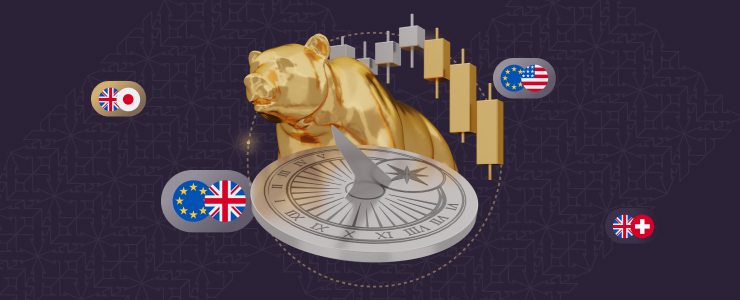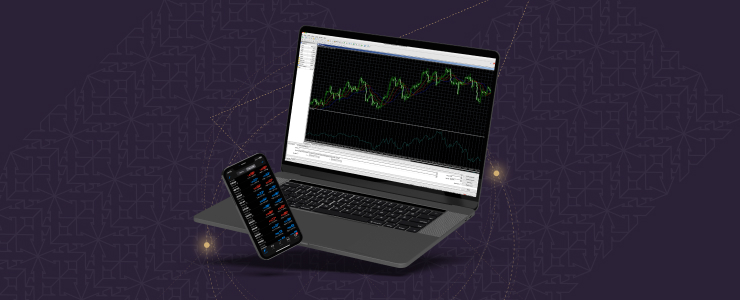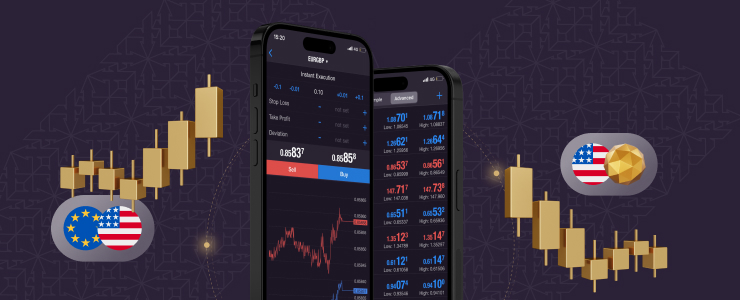In the forex world, there are a lot of small details that affect trader outcomes. Usually, newer traders aren’t used to planning around these small optimisations, and this can lead them to wonder what they are doing wrong.
Trading times are one of these optimisations. Depending on the asset, they can have a relatively minuscule to a massive effect on trading efficiency. Engaging with an asset during its peak trading hours and outside of them can yield completely different results and result in a completely different experience.
Forex traders should be wary of the trading hours for any pair they wish to trade. This article will go over the importance of getting trading hours right, as well as some peak trading periods.
Why do trading forex times differ?
Trading instruments don’t magically gain sentience and behave differently when the time changes. All asset behaviour, including time-based one, depends on traders and pre-existing market qualities.
So what does that mean? In essence, while the forex market operates 24/5, individual exchanges in the world have more restrictive operating hours. And that applies not only to these exchanges, but also to large firms and institutions.
Let’s say it’s 2 AM in Japan. The forex market is open, and any trader can access JPY. However, currency prices move when there’s a large central bank announcement, companies make significant deals, or political news shakes up the markets. So, while traders can access the yen via the forex market, its behaviour will be considerably different than, let’s say, when it’s the middle of the workday in Japan.
The same goes for all other currencies. When the country or bloc that a currency is based on is awake and working, the currency will be much more active. Because forex has practical use, and large institutions and companies make up most of its activity, most traders prefer to trade alongside them.

Why trade during peak forex times?
Trading during peak times may sound like you’re competing with the large institutions and companies mentioned previously. In a sense, this is true, and it frightens some traders, so it may sound better to stay away from these peak hours.
However, while everyone on the market is, in fact, competing, it’s not quite as hostile as it sounds. Institutions and companies mostly behave in highly predictable ways, and if large announcements are excluded, they simply contribute to what most would call normal trading routines.
In practice, this has numerous benefits for retail traders. Here are some of them:
- Better liquidity: There are more buyers and sellers present on the market during peak hours, which leads to better liquidity. This means that it’s easier to place and close trades, spreads are usually tighter, and the risk of slippage is lower. In general, better liquidity is good regardless of tactic, since it allows traders more control over their trades.
- More price movement: While some traders prefer steadier periods, peak times offer more price volatility. While this does increase risk, it also creates more opportunity for well-placed trades.
- Big events: Major news usually happens during peak hours. Tactics like news trading or swing trading that rely on big movements or significant changes in direction will necessitate trading during peak hours. That’s because these large movements usually happen around events like major financial releases or news.
In essence, peak trading times give traders a more skill-expressive experience. Traders who know how to handle themselves in the moment will likely find trading during peak hours more suitable to their preference.
However, don’t think that you can’t trade at all if your asset is outside of peak hours. Traders can, for instance, play for market opening times, and buy or sell pre-emptively to predict volatile trading sessions. Alternatively, buy-and-hold traders may want to trade outside of peak hours to avoid volatility and get the exact price they want.
Altogether, it’s not necessary to trade during the best windows. It is, however, notable that some tactics, like scalping, only work when markets are highly liquid. As such, traders need to be cognisant about how trading times affect their strategy and use it to enhance their opportunities.

What are the peak forex trading hours?
As noted earlier, every asset has its own peak trading hours. For a forex pair, the peak hours are usually when the trading sessions of the two currencies that comprise the pair match up. So, for EUR/JPY, for instance, the most active time is usually during the overlap of Europe’s and Japan’s trading sessions.
However, there are also times when all markets are more active. In this part of the article, we go over some important individual trading sessions and their overlaps.
European (London) session: 8 AM GMT to 5 PM GMT
The largest and most volatile session for forex traders. European assets are most active during these times, including major currency pairs in European countries. Traders can expect more activity for EUR, GBP, and CHF pairs.
US (New York) forex time session: 1 PM GMT to 10 PM GMT
The second largest global session, with the US being a major market mover. Majors are very active during this period, as they are all USD pairs.
Asian (Tokyo) forex time session: 12 AM GMT to 9 AM GMT
The most influential session for Asian markets overall. Most forex traders will automatically look towards JPY, but other lesser-known currencies like SGD, for instance, are also quite active.
Australian (Sydney) forex time session: 10 PM GMT to 7 AM GMT
A smaller session, but the one that starts the earliest. AUD and NZD are expected to be active, but tension pent up over the weekend may also start releasing during this session, creating quite a bit of price movement. Good for night owls who want to get a head start.
London/New York overlap: (1 PM to 5 PM GMT)
By far, this is the most important session for forex traders. Not only are EU and US currencies more active, but market activity is the highest in general. These four hours represent the time when two of the largest global financial centres operate simultaneously, and it leads to a lot of action.
Tokyo/London overlap: (7:00 AM to 9:00 AM GMT)
This overlap is shorter, only spanning two hours. However, it presents a transition in focus from the Asian market to the European market. Additionally, this is when the market reacts to overnight news. For instance, news from China may have a significant impact during this opening.
Sydney/Tokyo overlap: (12:00 AM to 7:00 AM GMT)
An important time for Asian-Pacific currency traders (AUD, NZD, JPY). Volatility is relatively low, and as such, traders can follow trends with some assurance that prices won’t go haywire.

Final note: Openings and Closings
The last thing to note is that markets are most active as they open and close. In the former, traders rush to capitalise on the tension that’s built up from the last session, and in the latter, they rush to close their positions for a variety of reasons, including not paying overnight fees and avoiding overnight risk.
Smart traders won’t blindly rush into a session. They’ll be aware of what the timing means for their trading routine, and whether they can access unique timing-based opportunities. And while this is a small optimisation, that’s how most traders improve – adding a lot of small optimisations can lead to much better results.
Disclaimer:This information is not considered investment advice or an investment recommendation, but instead a marketing communication.




